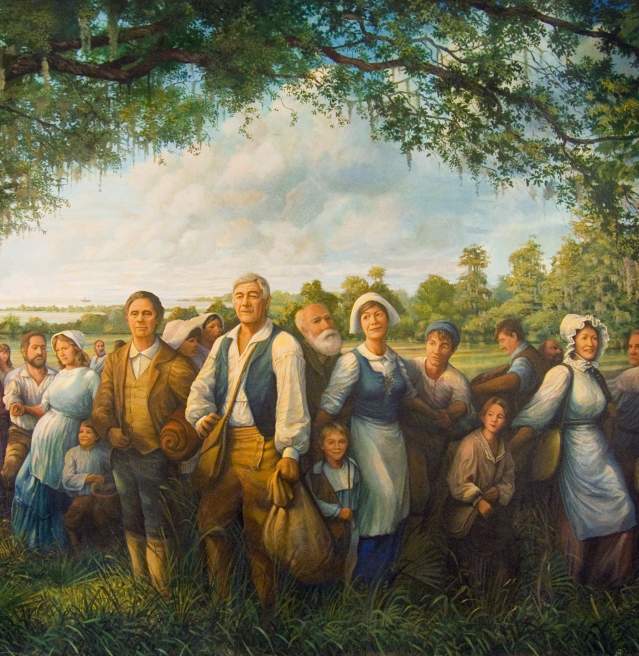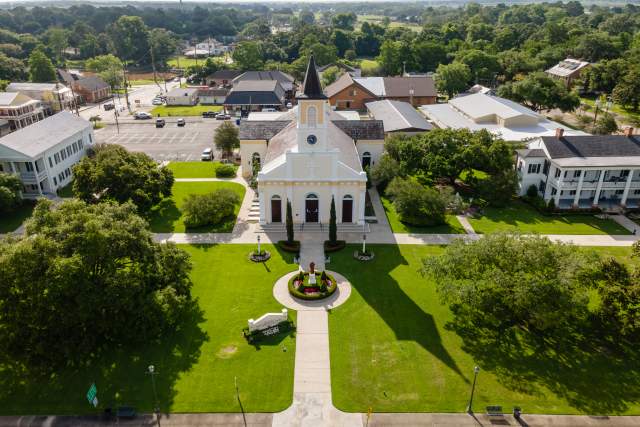History
Acadiana, the historically French region of Southwest Louisiana, is best known for its Cajun culture. The word Cajun comes from a regional English pronunciation of “Acadian”. Exiled from their homeland on the Atlantic Coast of Canada by British forces, some 3,000 Acadians found refuge in Louisiana in the late 1700’s. After a hundred years of contact with Louisianians of European, African, and indigenous descent, “Cajun” became a blanket term for working class, French-speaking whites. Today’s Cajuns, or Cadiens as they call themselves in French, are found in all walks of life: they are farmers and governors, oil workers and educators.
It can be said that Acadiana was born when 200 members of the Acadian resistance settled around present-day St. Martinville in 1765. They referred to South Louisiana as La Nouvelle Acadie, or New Acadia. On the land where the city of St. Martinville now stands, they met a handful of enslaved Africans who were homesteading and tending cattle for French landowners. The settlement was known as Les Poste des Attakapas, for the indigenous Attakapas people who once hunted here and now occupied outlying lands.
Spanish-speaking Malaga settlers and refugees fleeing the French Revolution soon followed, as well as Creole families from New Orleans and Mobile and some Anglo-American families. With the increased need for labor came more slaves from Louisiana or other states as well as from West Africa. A large number of Anglo-American slaves from Virginia and elsewhere on the East Coast were sold to local buyers between 1830 and 1850. The city’s antebellum population grew to include a number of gens de couleur libre, or free people of color. By the 1880s, a large influx of Italian merchants, German wheat farmers seeking a place in the rice industry, and Irish workers working for the railroad, formed a cultural amalgam of diverse groups.
Today, the founding cultures, Acadian, African, French, Italian, and Spanish, have maintained their cultural identities while blending together to form a savory “cultural gumbo”.
“Joie de vivre” (joy of living) is de rigueur in St. Martin Parish. The pleasure-loving nature of the region manifests itself in festivals, dancing, and food. What better way to enjoy a serving of cultural gumbo? Visitors are transported to a place like no other they will ever experience. The history, cuisine, hospitality, and music of the founding cultures are alive and well and eagerly await you in St. Martin Parish.
Towns
Today, Butte La Rose is a small community nestled along the Atchafalaya Basin. It is primarily a weekend vacation getaway for families in the Lafayette/Acadian area

